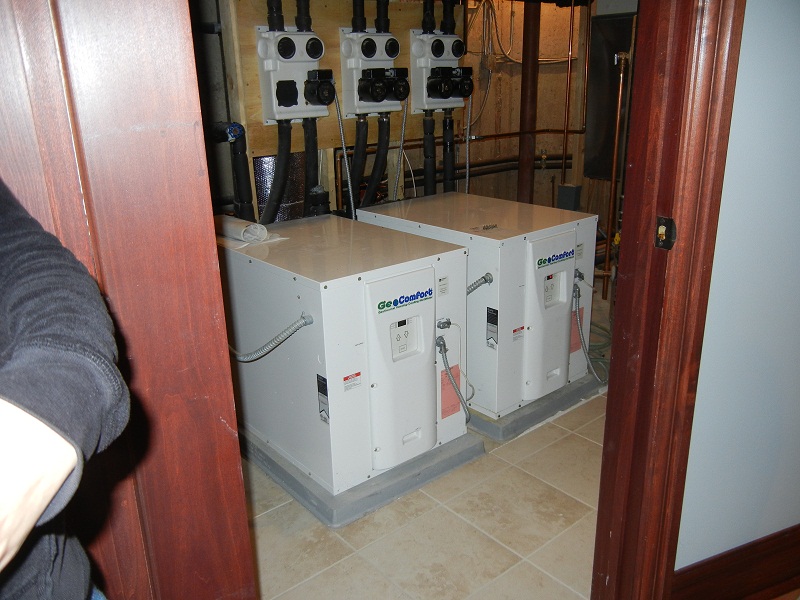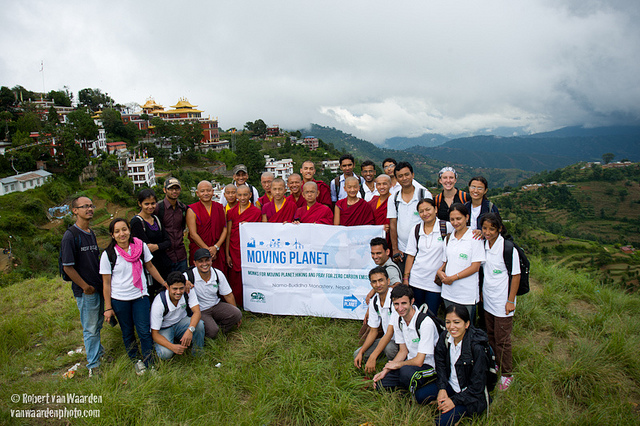Green Connections Bike TourOver 100 people learned about sustainability projects at 15 homes, schools, community gardens and green businesses in Sept. 2011.
Submitted by Earl Lemberger
While rain fell during the morning and threatened in the afternoon, over 100 determined bikers, walkers, and pedestrians of all sorts, navigated around Oak Park and River Forest, visiting 15 different sites where examples of sustainable living practices were on display, in the inaugural Green Connections Bike Tour. The tour was part of an international event in over 180 countries called Moving Planet Day.
Labor of love for passionate, informed site hosts
Many people shared their impressions about the sites they visited at the after-tour gathering. Several participants commented on how passionate and well informed the hosts were. One of the few complaints was that 20-25 minutes was not enough time to learn all there was to tell as each site. The sites ranged from highly energy efficient homes, to urban vegetable gardens, to the raising of chickens in an urban environment, to examples of how our local schools are educating kids about sustainable practices such as composting, zero waste, organic gardening, and creating community. All sites were graciously made available by their owners, proprietors, faculty leaders or sponsoring group for the benefit of the community. Click here to see a description and photo of each site.
Visitors were asked to choose up to four sites that could be visited at specific times during the afternoon, so for the hosts this meant greeting and sharing information about their site to four different groups of up to 10 to 20 residents in some instances, essentially back to back, throughout the afternoon – truly for them a labor of love.
Post tour gathering includes sharing, food and reflection on how this event connects to the bigger picture
Following the last site visit a celebrative post-tour gathering was held at Field Park, in Oak Park, and was attended by over 50 people who had participated in the afternoon. The program included a welcome and opening remarks by Melanie Weiss, one of the tour organizers, and comments by Village of Oak Park Board member Bob Tucker and PlanIt Green organizer Gary Cuneen. Both Bob and Gary talked about the importance of events such as this in educating the public at large to the notions of sustainability, energy conservation, and their impact on climate change and global warming, as well as how these events can contribute to creating and maintaining sustainable communities not only here but, when copied, in other cities, towns, and villages.
Judith Hamje, another of the tour organizers led a reflection on the tour experience and invited the group to share ideas, practices, or skills they could take from the sites they visited and incorporate in their own lives and homes. In addition, all participants were asked to complete a survey questionnaire, graciously created for the event by students at Concordia University in River Forest, which, when compiled will measure the event’s effectiveness and hopefully give insight into how to improve future events of this type.
Food for the closing gathering was generously contributed by Whole Foods, River Forest, and Trader Joe’s and Chipotle, Oak Park. In addition, Green Community Connections would like to thank the following organizations who contributed by agreeing to be tour sponsors or local business partners for the event:
- Active Transportation Alliance
- Seven Generations Ahead
- Interfaith Green Network
- Village of Oak Park
- Greenline Wheels
- Buzz Café
- Career Enterprises
- Euclid Avenue UMC
- Flybird
- Golden Hatpin
- Green Home Experts
- Majamas
- OPRF Community Foundation
- State Farm
- Trader Joe’s
- Unity Temple
- Webtrax Studio
- Whole Foods
Green Community Connections greatly appreciates their support.











